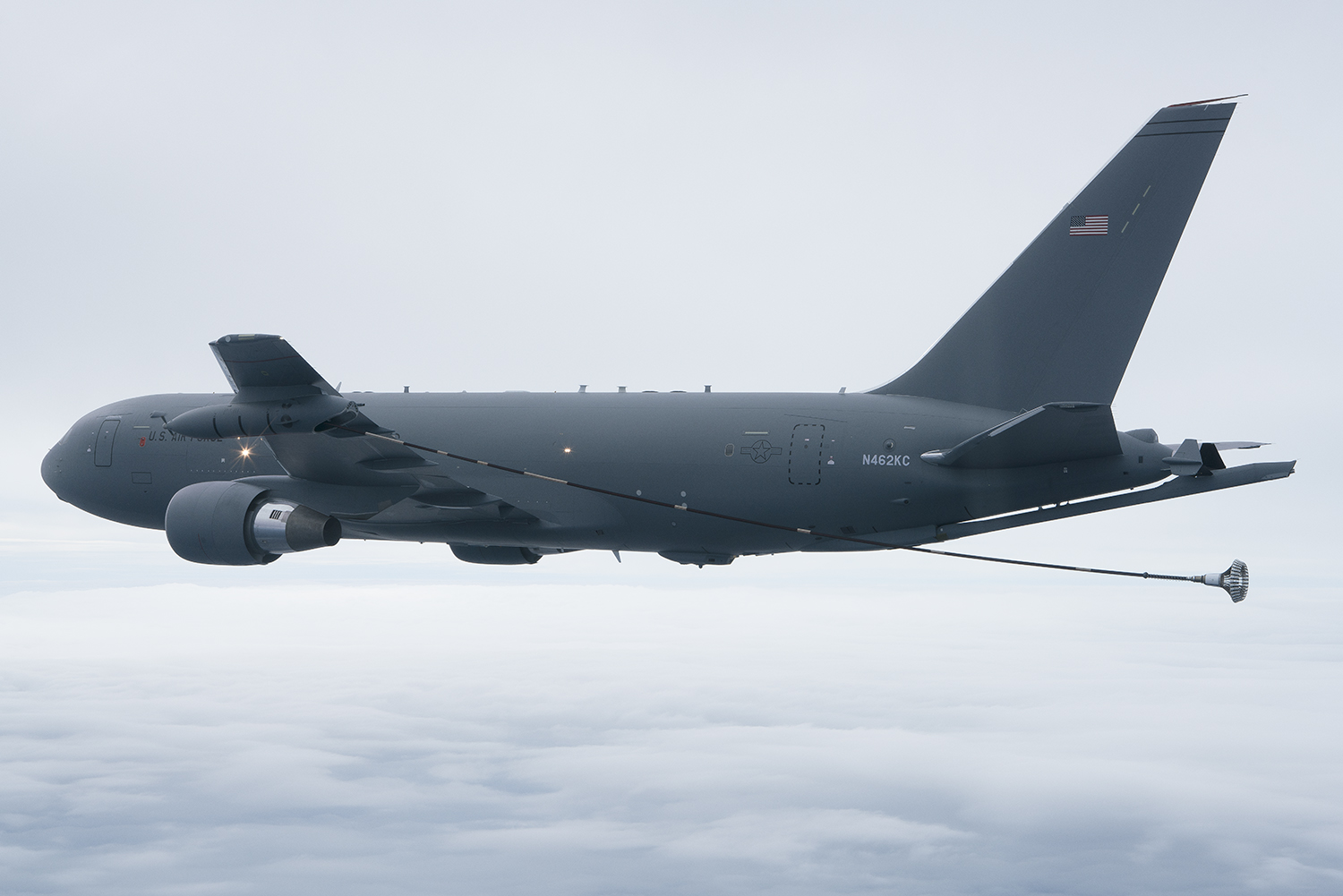USAF is sticking to its plan of building 15 KC-46A tankers a year for about $3 billion—2018 is now the second year at that rate, which is expected to persist through the late 2020s. Boeing photo by John D. Parker
John Tirpak
The Air Force’s Fiscal 2018 budget request includes just a handful of new, in-production, non-fighter aircraft.
The service is sticking to its plan of building 15 KC-46A tankers a year for about $3 billion—2018 is now the second year at that rate, which is expected to persist through the late 2020s. Two variants of the C-130 will be purchased: five special operations MC-130Js and two special ops HC-130Js, but no C-130J Super Hercules (the stretched model), whereas one was purchased last year in the Overseas Contingency Operations account.
There were no MQ-9 Reaper remotely piloted aircraft in the Air Force’s base budget, but the service plans to buy 16 with OCO money, according to budget slides. Air Combat Command chief Gen. Mike Holmes told Air Force Magazine recently he needs to buy 20 Reapers a year to both build up the inventory for the DOD-mandated levels of operations and to contend with attrition.
Maj. Gen. Jim Martin, answering questions at an Air Force budget briefing, said the figure of 16 is the result of “tough choices” that had to be made in the budget (the Air Force could not late Tuesday explain a discrepancy with one of the Pentagon budget briefing books that said 32 Reapers were funded in the OCO accounts).
The Air Force is not buying any more RQ-4 Global Hawk strategic reconnaissance RPAs, and Martin said there’s no definitive sunset date on the retirement of the U-2S spyplane, nor is there a planned retirement for the A-10 strike aircraft.
Though USAF briefing slides said the service “maintains commitment to develop next-generation trainer [T-X],” no dollar values were briefed on this program, which seeks to start fielding a new trainer in the 2022 timeframe. The JSTARS recapitalization program was funded at $417 million.
Martin acknowledged that a Service Life Extension Program on the F-15C fleet will go forward, and USAF budget books said capability upgrades to the F-15’s radar and electronic warfare suite—the Eagle Passive/Active Warning Survivability System—is valued at $963.1 million in the FY18 request. USAF will spend about $1 billion on capability upgrades for its B-1, B-2, and B-52 bomber fleets, and a similar amount on improvements to the F-22 fleet. The HH-60 Combat Rescue Helicopter would get $354 in the 2018 budget for continued development.
There’s $434 million in the budget for defining the design of the Presidential Aircraft Recapitalization, or Air Force One project, which Martin’s deputy, Carolyn Gleason, said reflects “a new baseline” after a Boeing-led review to scrub costs on the project. Two PARs are planned, with initial service in 2024.
The Air Force will spend just over $2 billion in FY18 on developing its B-21 Raider bomber, which Gleason said pays for “detailed design work.” Gleason said the Next Generation Air Dominance project has entered the analysis of alternatives phase for what USAF leaders have been referring to as the Penetrating Counter Air aircraft; its funding leapt from $21 million in the enacted 2017 budget to $295 million in the Fiscal 2018 request.
Adaptive engine technology—aimed at making more fuel-efficient and reliable powerplants available for the F-35 and future combat aircraft—would get $954 million.
